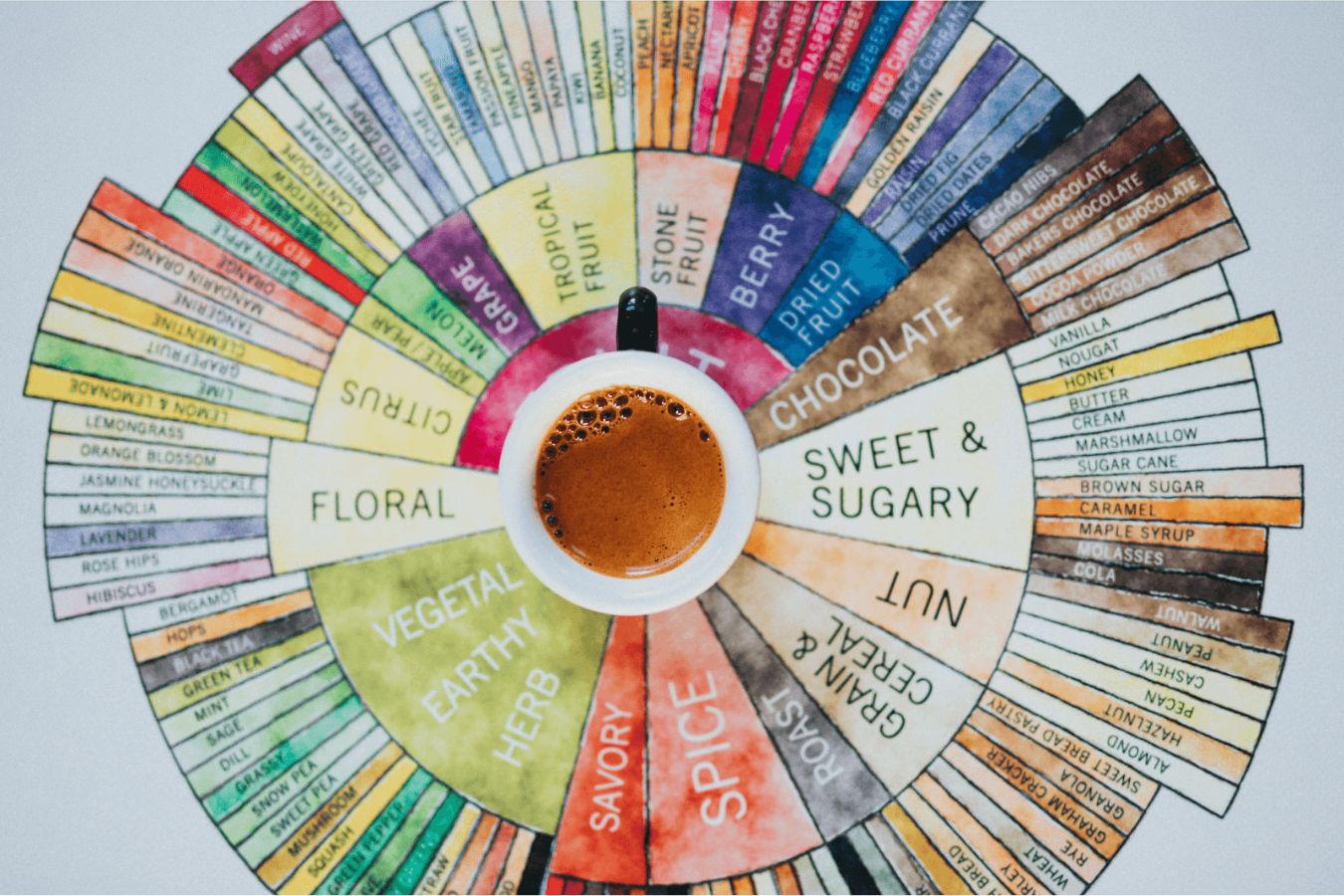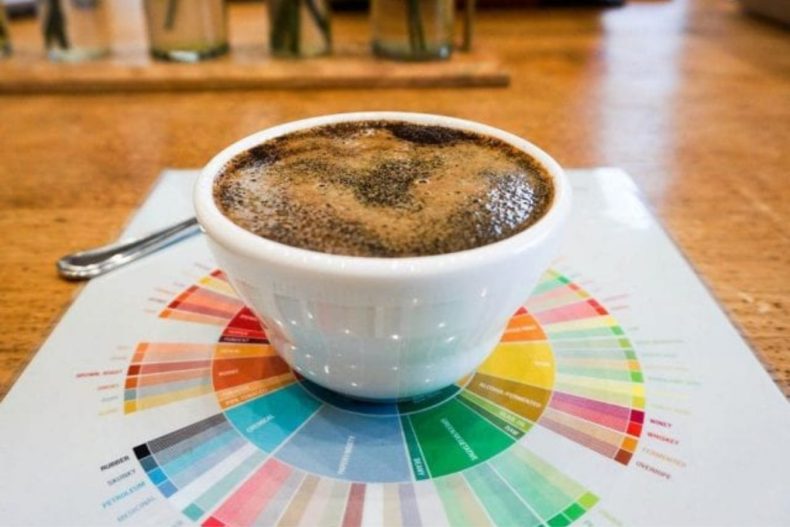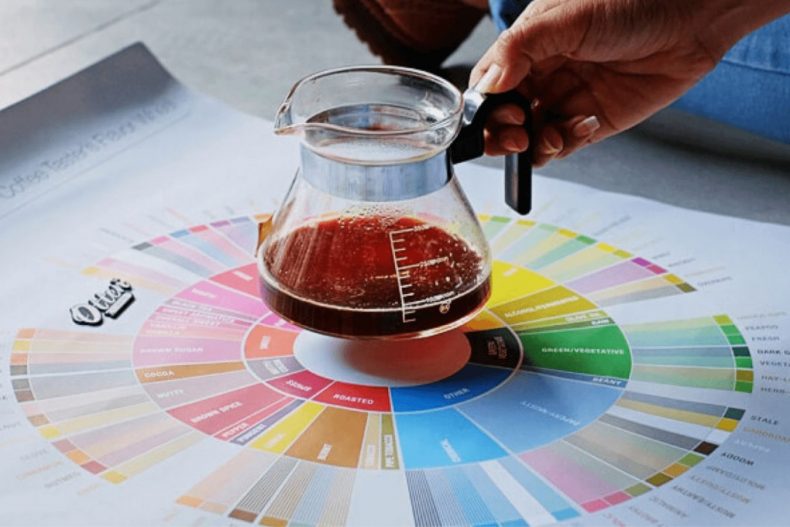
Cuppers (coffee-tasting experts or professional baristas) strive to grasp and explain the taste of coffee in greater detail than the four primary flavors: bitter, tart, sweet, and sour. The Coffee Taster’s Flavor Wheel was born as a result of this.
Why is a taste coffee flavor wheel needed?
The Coffee Taster’s Flavor Wheel is a suggested table of descriptive vocabulary systems (Sensory Lexicon) compiled and analyzed by WRC – World Coffee Research (World Coffee Research Organization). Tastes, explicitly requesting a specific flavor structure in the coffee
It’s simple to figure out what coffee flavor you’re after using the Coffee Taster’s Flavor Wheel.
The coffee’s taste flavor wheel is a suggested table of descriptive vocabulary systems (Sensory Lexicon) researched by WRC – World Coffee Research (World Coffee Research Organization), unified to arrive at analysis.
Tastes accurately call for any flavor structure in the coffee. It’s easy to figure out what kind of coffee flavor it is with the Coffee Taster’s Flavor Wheel, just like it’s easy to figure out what kind of meal it is if you close your eyes and try it.
For example, when you eat fish, you’ll know you’re eating fish, and when you eat meat, you’ll know you’re eating meat. You can only taste fish and meat to determine their flavor when you reach a higher level.
For example, when you eat fish, you’ll know it’s fish, whenyou eat meat, you’ll know it’s flesh. When you reach a higher level, you can only taste fish and meat to determine their tastes. There is no need to examine the coffee taster’s flavor wheel if you detect the essential flavors of coffee, such as bitter, sweet, and sour.
On the other hand, the coffee taster’s flavor wheel is required to precisely distinguish and analyze the millions of flavor structures inherent in coffee. This breakdown will help you define and describe the most common tastes clearly and concisely. When the same coffee type is cultivated in different places with varied weather, it produces distinct flavors; roasting produces a more complex flavor combination.
Original of coffees taster’s flavors wheel? How to determine the taste of coffee?
Tasting Aroma
The 1995 “Coffee Taster’s Flavor Wheel” version is divided into two segments. The “Faults and Taints Wheel” on the left discuss the harmful impacts on coffee beans during the “From seed to cup” process, such as Musty, Moldy (mold), Sour (sour), Phenolic, and so on.
The “Aromas and Tastes Wheel” is separated into two sections on the right side. “Aromas” are odors perceived through the sense of smell, and “Tastes” are tastes perceived through each individual’s taste buds.
Enzymatic, sugar browning, and dry distillation are the three main aspects of aroma. The coffee will have varied significant flavors depending on the degree of roasting. The coffee flavor is “sour, sweet, salty, and bitter,” based on four essential ingredients.
Acidity (acidity) is produced first when coffee is extracted, followed by bitterness (bitterness). The various flavors of coffee can be derived from these four primary constituents.
SCA released a new “coffee taster flavor” board in 2016. The latest version builds on the original board design by expanding the vocabulary of coffee flavors (Sensory Lexicon). SCA’s feat in inventing and upgrading the flavor classification, making it easier to use with the “2 in 1” function, is Coffee Taster’s Flavor Wheel 2016.
Every coffee drinker should use the reference fee Taster’s Flavor Wheel (coffee flavor circle) as a resist coffee specialist in identifying, comparing, and describing the best flavor. And help us identify the coffee flavor we appreciate daily.
It’s not as difficult to use the coffee circle to study it. You don’t have to be a professional copper to experiment with your cup of coffee, and you may share your experiences with others to improve your skills. Isn’t it simple yet no less attractive?

